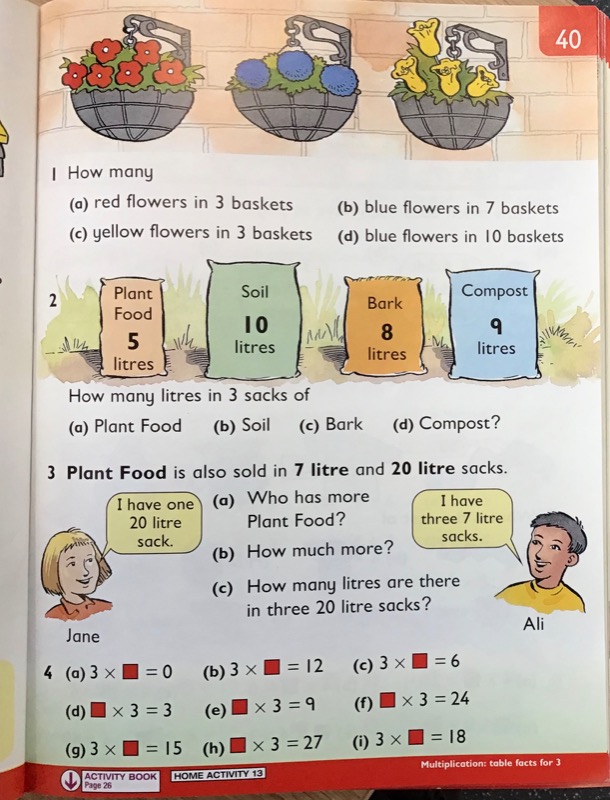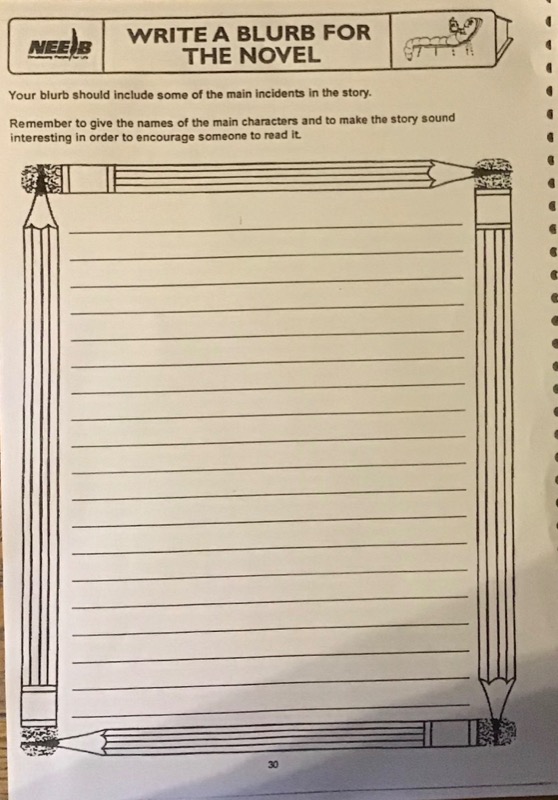Primary 4O tasks for Thursday 4 February 2021
Hello boys and girls
These are today’s tasks. They are also uploaded to our Team. Remember to upload your finished work so I can view it and give you feedback.
Literacy
We are continuing with National Storytelling Week. Today we are going to listen to a story called, Sylvester and the Magic Peeble written by William Steig and read by Reid Scott. Type in: www.youtube.com/watch?v=BNGUnk8JeLE (Sylvester and the Magic Peeble) and listen to the story carefully because it contains lots and lots of useful information for your task which you have to do. Your task is attached below and you should complete it in your literacy books. There is no need to write out the questions. You have to write a blurb for this story. What is a blurb? A blurb is often found on the back of a book and it tells you a little of what the story is about. It is designed to make the person looking at the book want to read it! A good blurb often sells a book📖. I would like you to write a blurb for Sylvester and the Magic Peeble. Include a little of what the story is about and the characters in the story. Take one of the books you have read at home and see how the blurb is written. Now you write your blurb.
Don’t forget, if you haven’t done so already, to post me some pictures of yourself reading your favourite books or reading a book at home so that I can put them on the school website for everyone to see during this week.
Remember to upload your work so I can view it and give you feedback.
Numeracy
Today we are going to continue with her multiplication tables. We are again going to use our tables to solve some word problems. Before we start let’s warm up. I would like you to count up in twos from 1 to 100 and then all the way back down to one. Now count up in fives from 1 to 100 and all the way back down to one. Now I’d like you to count up in tens from one all the way up to 100 and then all the way back down. You could see if you beat yesterday’s time! Did you beat your time? Now I’d like you to count up in threes from 1 to 30 and back down again. Now I would like you to count in fours from 1 to 40 and back down again. How did you get on?Now let’s try the same thing with the six times table from 1 to 60. How did you get on?👍 or 🤙 or 👎
I would like you to look at your task for today which is attached below. This task involves problems using your 3 times table knowledge. I would like you to do your work in your numeracy book. Make sure you number your questions and write your work neatly and read over the questions and your answers carefully.
Remember to upload your work so I can view it and give you feedback.
World Around Us
Air Raid Shelter Facts
During the Blitz many people had to have some way of staying protected from the bombs that were dropped by the Germans during the Blitz. In large cities many people sheltered in underground railway stations. Sometimes this was not possible so people had to build protective shelters at home. These were shelters designed and supplied by the Government to protect people. There were two types of shelter. The Anderson shelter which was for outdoor use by those people who had gardens and the Morrison shelter which was for indoor use. I would like you to watch this video which tells us about air raid shelters. It is on YouTube. Type in: www.youtube.com/watch?v=rHyxP3epU-w (Your Anderson Shelter this Winter 1940). The following gives you information on the two types of shelter.
Anderson Shelter Facts
Here are some facts about Anderson Shelters, popular air raid shelter used during the Blitz.
• The Anderson shelter was designed in 1938.• It was named after Sir John Anderson, the man responsible for preparing Britain to withstand German air raids. • Anderson shelters were designed for 6 people. • The construction of the shelter was reasonably simple. The main part of the shelter was formed from six corrugated steel panels. Flat corrugated steel panels were bolted on to form the sides and end panels (one of which contained the door). • The shelters measured 1.4m wide, 2m long and 1.8m tall. They were quite cramped and someone taller than 6ft would not have been able to stand up in one. • Once constructed, the Anderson shelters were buried over 1 metre in the ground and then they were covered over with a thick layer of soil and turf. • Anderson shelters were free to those with an annual income of less than £250. For those who didn’t fall into this category, the price was £7. • Approximately 3.5 million Anderson shelters were built either before the war had started or during the conflict. • Anderson shelters were very effective at saving lives and preventing major injuries during air raids, but they were really cold during the winter months. To try to prevent people going back to their warm houses at night when the weather got colder, the Government issued some guidelines about how to make the Anderson shelters more comfortable. • Many Anderson shelters have survived to this day. Lots were dug up and used as garden sheds. • Families were provided with the materials and were expected to construct the Anderson shelters from a set of instructions.
Morrison Shelter Facts
Here are some facts about Morrison shelters, or, to use it’s official name, the ‘Table (Morrison) Indoor Shelter’. • The Morrison shelter was designed by John Baker and named after the Minister of Home Security, Herbert Morrison. • The shelters came in kits which could be assembled (bolted together) in the home. • Morrison shelters were 2 metres in length, 1.2 metres in width and 75 cm tall. It was designed to be slept under at night and used as a table for the rest of the time. • The shelter had over 350 parts, but mainly consisted of a steel top (like a table top) and wire mesh sides (one of which could be lifted open and acted as the door). • The Morrison shelter was not designed to survive a direct hit from a bomb, but it was really effective at protecting people from the effects of a bomb blast. • Over 500,000 Morrison shelters were made and they were given free of charge to families who earned less than £350 a year.
Diary
Complete today’s diary entry and make sure that you date your entry. Remember to upload your work so that I can view it and give you feedback.
Braidside Integrated Primary & Nursery School , 89 Frys Road Ballymena, County Antrim BT43 7EN | Telephone: 028 2564 7899



